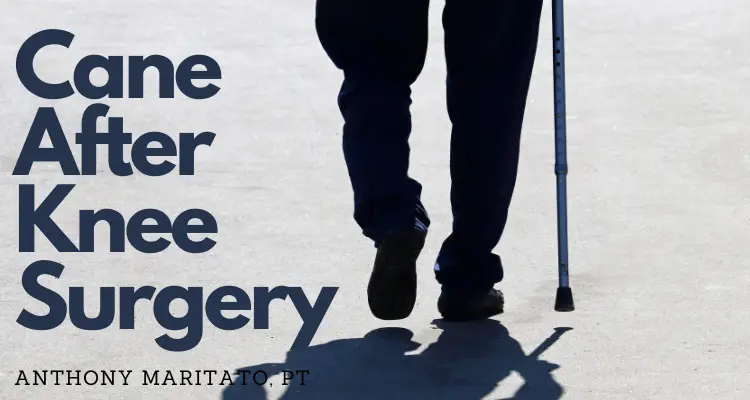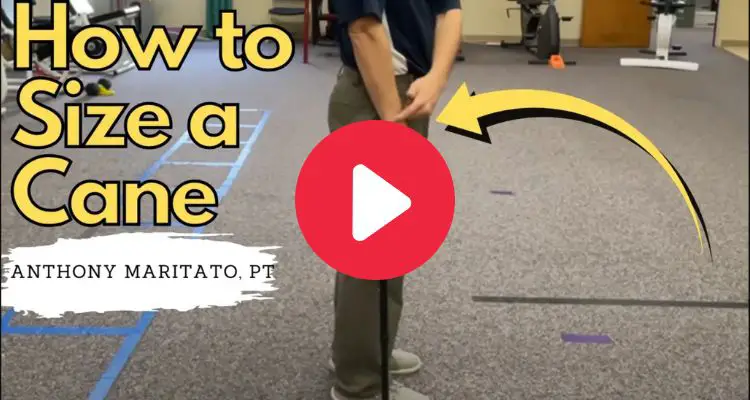How to Use a Cane After Knee Surgery

Understanding the Purpose of Using a Cane after Knee Surgery
Knee surgery, particularly knee replacement, can be a life-altering procedure that improves mobility and reduces pain for those suffering from chronic knee conditions. Recovery, however, requires careful rehabilitation and the temporary use of mobility aids. One such aid is the cane, an essential tool for many individuals following their knee surgery.
There are several key reasons for using a cane after knee surgery. Let’s discuss them in detail:
Support and Balance
One of the primary purposes of a cane is to provide additional support and balance during your recovery. After knee surgery, it’s normal for your leg strength and balance to be affected. A cane acts as an extra leg, giving you stability, reducing the risk of falls and increasing confidence while you navigate your daily activities. It’s especially useful during transitional movements such as climbing stairs or getting in and out of a car. * In these cases a cane is just a way to touch the ground. It helps to steady your body while you lift one of your legs to step up, in, or over an obsticle.
Offloading Weight
A cane can also help by offloading weight from your affected knee. This is crucial in the early stages after surgery when your knee is still healing, and bearing full weight might not be advisable. By redistributing some of the body’s weight to the upper body and the unaffected leg, a cane can ease discomfort and promote healing.
In this case the cane is most often used opposite the surgical knee. The cane is advanced when the surgical leg steps forward.
Enhancing Rehabilitation
Another benefit of using a cane is that it can aid in your rehabilitation process. With the assistance of a cane, you can gradually improve your walking pattern and gait, crucial components for a successful recovery. Furthermore, using a cane can facilitate the return to activities like exercise biking and walking your dog, while ensuring your safety and confidence.
My patients are often concerned that they will become dependent on a cane or that a cane will make them weaker in some way. The reality is, a cane provides that added assurance and usually results in my patients walking more total steps per day with more confidence and a better walking gait pattern.
Gradual Progression Towards Independent Mobility
Finally, a cane serves as a transitional tool on your journey towards independent mobility. After surgery, many individuals start with a walker for support and then move to a cane as strength and balance improve. This progression is an important part of the recovery process, allowing you to regain your independence step by step.
The use of a cane after knee surgery is not just about getting around. It’s an integral part of your recovery journey, offering support, stability, and a means to regain your mobility. Each individual’s needs and progression can vary, so it’s important to follow your physical therapist’s guidance regarding the appropriate use of mobility aids.

How to Properly Use a Cane after Knee Surgery
Using a cane correctly is key to reaping its benefits during your recovery from knee surgery. Improper usage can result in discomfort, imbalance, and potential injury. Let’s walk through a step-by-step process on how to correctly use a cane after knee surgery.
| Step | Description |
|---|---|
| 1 | Adjust the cane’s height: Stand straight and let your arm hang at your side. The cane’s handle should align with the crease of your wrist. Adjust the cane’s height until this alignment is achieved. |
| 2 | Hold the cane on the unaffected side: Contrary to what many believe, the cane should be held in the hand opposite to the affected knee. This allows the cane and the affected leg to swing and strike the ground together, providing more support and stability. |
| 3 | Move the cane forward as you step with the affected leg: As you take a step with your affected leg, move the cane the same distance forward. This ensures that the cane and the affected leg provide support together. |
| 4 | Follow through with the unaffected leg: Complete the step by then moving the unaffected leg forward, past the cane and the affected leg. You should not need to lean on the cane; it is there for balance and support. |
| 5 | Repeat the process: Continue the above process with each step. Practice under the supervision of a physical therapist initially to ensure proper technique. |
Remember, every individual’s recovery process is unique, and so is their progression from a walker to a cane, and finally to independent walking. This progression should always be guided by a professional. They will take into account your specific situation and prescribe exercises to help you regain strength and balance, eventually reducing your reliance on the cane.
If you experience discomfort, or if you feel that your balance is off despite correctly using the cane, it’s essential to communicate this with your physical therapist. They can help make necessary adjustments to your cane or your technique to ensure your safety and comfort.
Common Mistakes to Avoid When Using a Cane
As crucial as it is to know how to correctly use a cane after knee surgery, it’s equally important to be aware of the common mistakes that could impede your recovery. Avoiding these pitfalls will ensure you get the maximum benefit from your cane while maintaining your safety and comfort.
Here are some typical errors and how to avoid them:
❌ Incorrect Cane Height: A cane that’s too tall or too short can cause discomfort and impact your balance.
✅ Always adjust the cane’s height so that the handle aligns with the crease of your wrist when your arm is hanging at your side.
❌ Holding the Cane on the Wrong Side: Using the cane on the same side as your affected knee can throw off your balance.
✅ Always hold the cane in the hand opposite to your affected knee.
❌ Over-Reliance on the Cane: Using the cane for all weight-bearing can slow down your recovery.
✅ Use the cane for balance and stability, not as the primary weight-bearing tool. The ultimate goal is to progressively reduce dependence on the cane.
❌ Skipping Physical Therapy: Avoiding prescribed exercises can delay your recovery and increase the time you’ll need to use a cane.
✅ Engage in the recommended physical therapy exercises regularly to regain strength and improve balance.
❌ Ignoring Pain or Discomfort: If cane usage causes pain or discomfort, don’t ignore it. This could be a sign of improper use or other underlying issues.
✅ If you experience any pain or discomfort, consult with your physical therapist immediately. They can identify the issue and make necessary adjustments.
Remember, your safety and successful recovery are paramount. If you’re unsure about anything, it’s always best to seek advice from your physical therapist.
Transitioning from a Walker to a Cane: When and How?
Transitioning from a walker to a cane is a significant milestone in your recovery from knee surgery. This shift represents an improvement in balance and strength. However, it’s important to know when and how to make this transition to ensure it is safe and effective.
When is the right time to switch? The answer will depend on your individual progress and should always be made under the guidance of a physical therapist. Typically, you might be ready to switch to a cane when:
- You can stand and balance without support
- You have regained some strength in the affected leg
- You can walk small distances with minor assistance
- Your surgeon or physical therapist gives you the approval
If you meet these criteria, you might be ready to transition from a walker to a cane. The “how” of this process is equally important. Here are some tips:
✅ Start with a quad cane: A quad cane has four points of contact with the ground and offers more support than a single-point cane. It can be a good stepping stone in this transition.
✅ Practice with your physical therapist: Your first few attempts to walk with a cane should be under the supervision of a physical therapist. They can correct your technique and ensure you’re using the cane safely.
✅ Gradually increase your walking distance: Start with short distances, and gradually increase as your comfort and confidence grow.
✅ Listen to your body: If you experience discomfort, fatigue, or if your balance is off, it might be too soon to switch to a cane. Don’t push yourself too hard – your recovery will progress at its own pace.
Remember, everyone’s recovery journey is different. You might transition to a cane quickly, or you might need a walker for a longer period. Both are perfectly fine, and your recovery journey should not be rushed. What’s important is moving forward safely and at a pace that’s right for you.
Key Takeaways
In summary, understanding how to properly use a cane after knee surgery is essential for your recovery. Here are the key takeaways from this article:
| Takeaway | Description |
|---|---|
| 1. Purpose of the Cane | Understand that a cane is primarily used for balance and support during the recovery process after knee surgery, not for bearing all your weight. |
| 2. Correct Usage | Proper use of a cane involves holding it on the opposite side of your affected knee and moving it forward as you step with the affected leg. |
| 3. Common Mistakes | Avoid common mistakes like incorrect cane height, over-reliance on the cane, and skipping prescribed physical therapy exercises. |
| 4. Transitioning from a Walker | Transitioning from a walker to a cane is a significant milestone. This should only be done when you can balance without support, and under the guidance of a physical therapist. |
Remember, every individual’s recovery journey is unique. Always consult with your healthcare provider or physical therapist before making any changes to your recovery plan.

Anthony Maritato, PT
Physical Therapist
Anthony Maritato, PT has been a licensed physical therapist and private practice owner since 2006. Ohio license #PT011602.
Anthony has been passionate about helping patients recover from total knee replacement surgery as well as rotator cuff repair surgery.

Best Used Exercise Equipment After Total Knee Replacement Surgery
Buying used exercise equipment after a total knee replacement can be a great way to save money while rehabilitating your new knee. In this article, I will share my 5 favorite places to find used exercise equipment. Facebook Marketplace eBay Craigslist Play It Again...

Tips For Traveling By Car After Knee Replacement Surgery
When is it safe to traveling by car after knee replacement surgery as a passenger? Most patients return to driving after total knee replacement surgery in 6 weeks. Here in the United States some patients will return to driving sooner if the replacement was on the left...

Pickleball Weight Loss Strategies
How Many Calories Are Burned Playing Pickleball for 60-minutes? Pickleball is a great cardiovascular workout if the intensity is kept high. A play may burn 8-11 calories per minute on the low end going up as high as 15-calories per minute on the higher end. Pickleball...

8 Pickleball Mistakes to Avoid for Beginners
Updated June 03, 2022 One of the main factors that cause beginners to experience setbacks when learning pickleball is doing too much too fast. Throught his article I will discuss the most common 8 pickleball mistakes along with some exercises you can try to prevent...

How much does physical therapy cost after a total knee replacement?
Phyiscal therapy cost varies greatly across locations and service providers. In this article we will examine the cost of physical therapy services for three different patients. One patient has traditional Medicare part B insurance. The second patient has no health...

3 Pros & Cons of Bilateral Knee Replacement
Having a bilateral knee replacement on the same day vs different days depends largely on your surgeon's assessment of your condition and current clinical research. A 2020 study suggested that patients receiving a same day bilateral knee replacement were not more...

Best shoes to wear after knee replacement
Best shoes to wear after knee replacement surgery:This article is specifically written to help you choose the best shoes to wear after knee replacement surgery when you return home. This information is focused on house-shoes and day 1 to week 6 post op.Click here to...

NEW Orthotics After Knee Replacement
Do You Need New Orthotics After Knee Replacement Surgery? Often, patients who receive a total knee replacement will have previously been prescribed custom orthotics. Custom orthotics may help reduce stress at the knee joint in the months or years before knee surgery...

Pain on the Outside of Knee After Total Knee Replacement
Experiencing pain on the outside of knee is common among individuals who have had a total knee replacement. 1. Fibular Head (Outside of Knee) The long skinny bone that runs along the outside of your lower leg is called the Fibula. This bone is not directly involved...